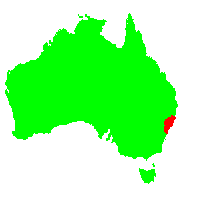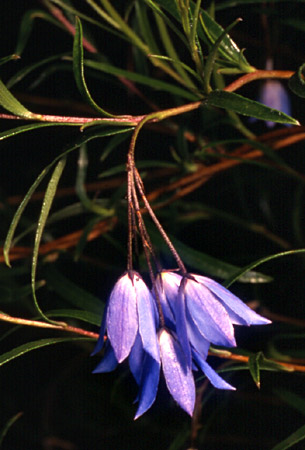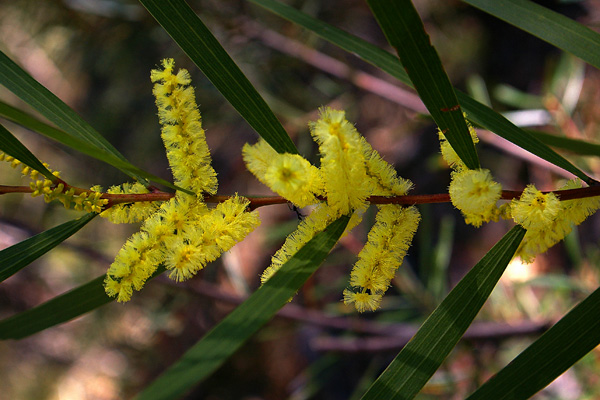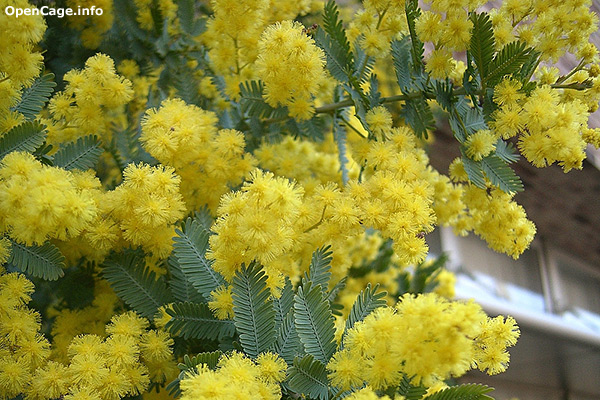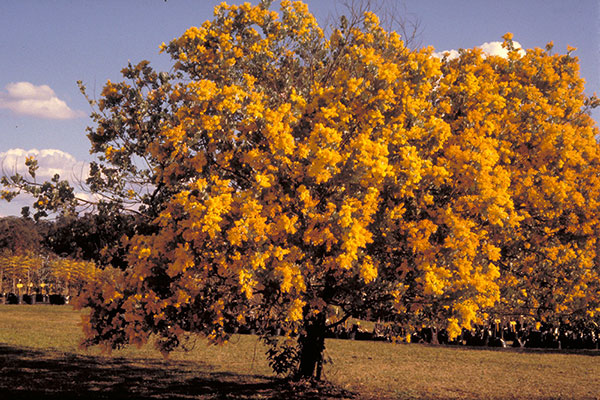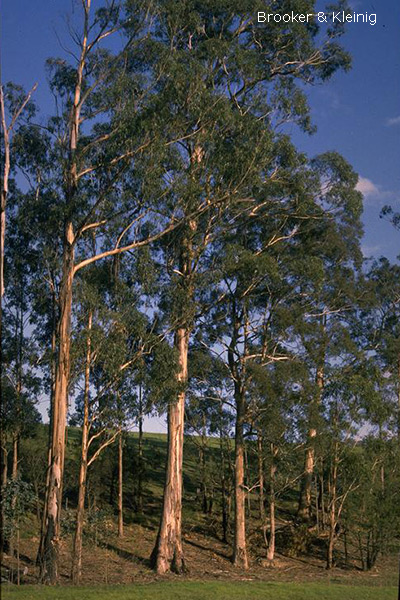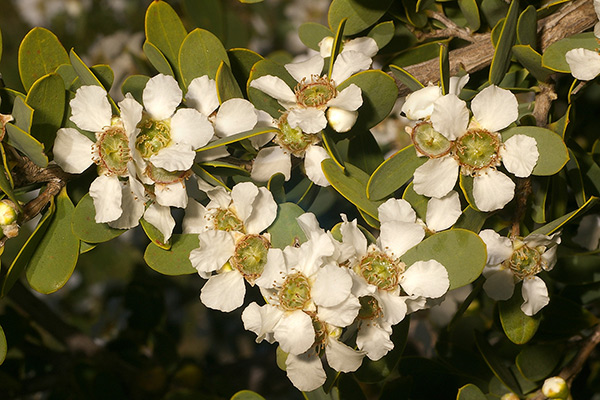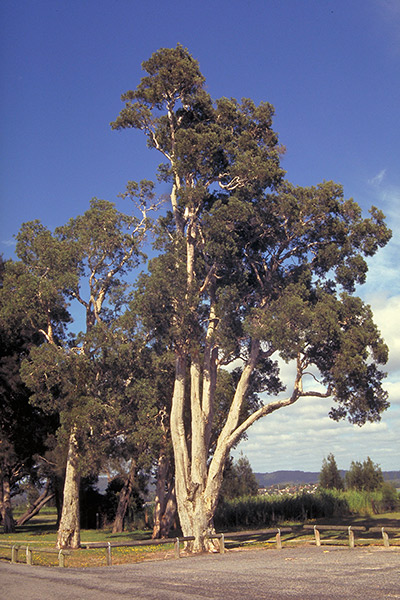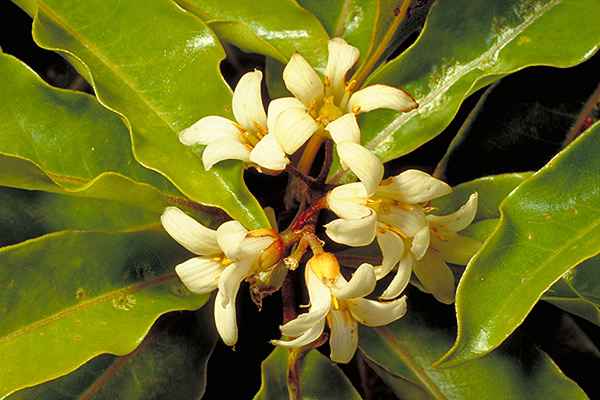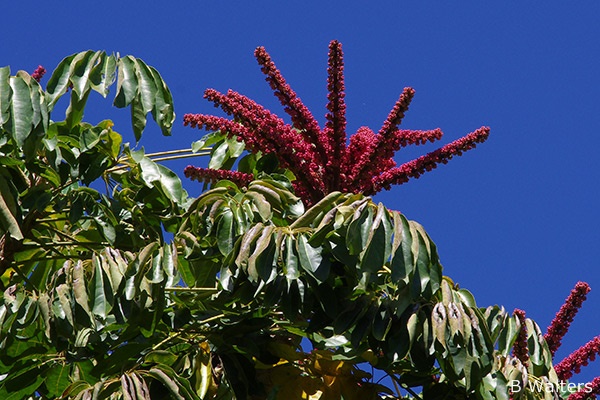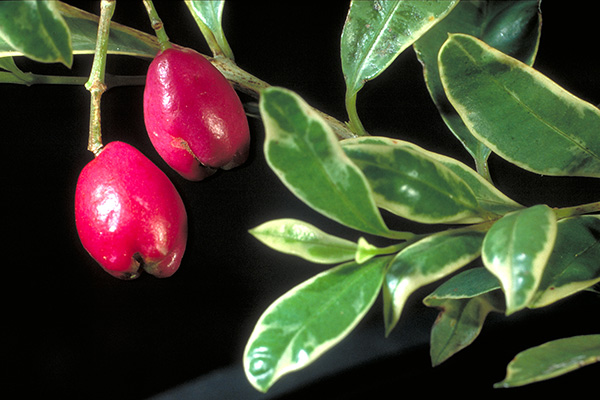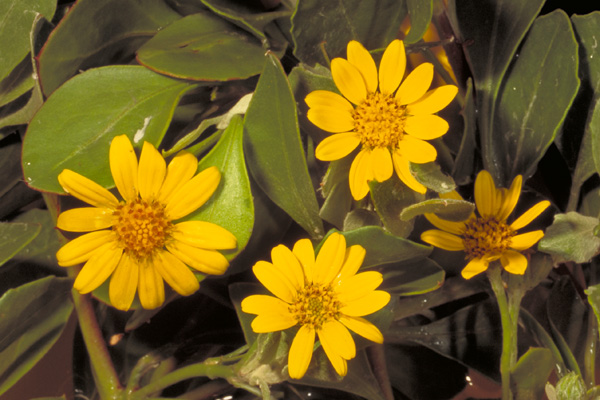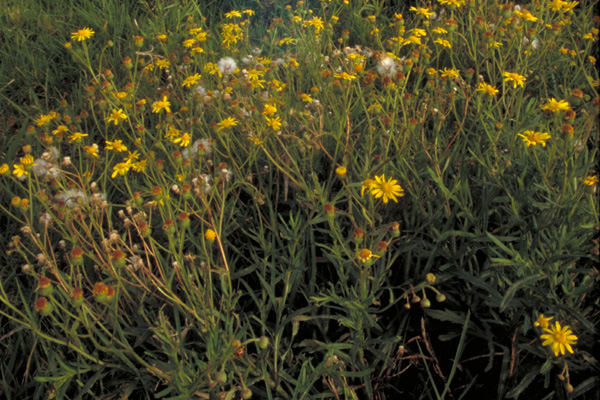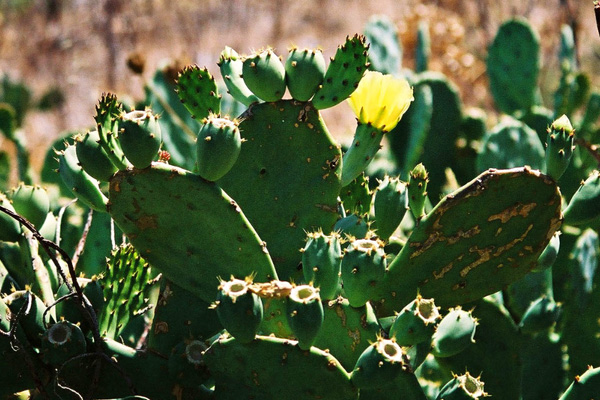General Description:
The genus Boronia is one of the best known of all Australian plants. There are approximately 95 species, all but one of which occur only in Australia. The majority of species are found in south-western Australia.
B.mollis is a small shrub of about 1-1.5 metres in height by a similar width. The foliage is pinnate (compound leaves made up of a number of leaflets) with leaves to around 40 mm long. They are softly hairy when young but may become smooth on the upper surface as they mature. The hairy foliage is one of the features that distinguishes B.mollis from the closely related B.fraseri. The flowers are 4-petalled of a star-like appearance and are pink in colour. They appear in spring and are about 10-15 mm in diameter, well displayed in clusters from the upper leaf axils and occur from mid winter to mid spring.
This is a very popular species in cultivation and is hardier than many other boronias in the garden. The cultivar ‘Lorne Pride’ is especially good and forms a rounded shrub to about 1 metre in height. B.mollis requires a well drained moist soil, preferably in semi shade although full sun is tolerated. It seems to be reasonably tolerant of dry conditions once established and is tolerant of at least moderate frost.
In common with most members of the Rutaceae, propagation of B.mollis from seed is difficult but cuttings usually strike readily from current season’s growth.
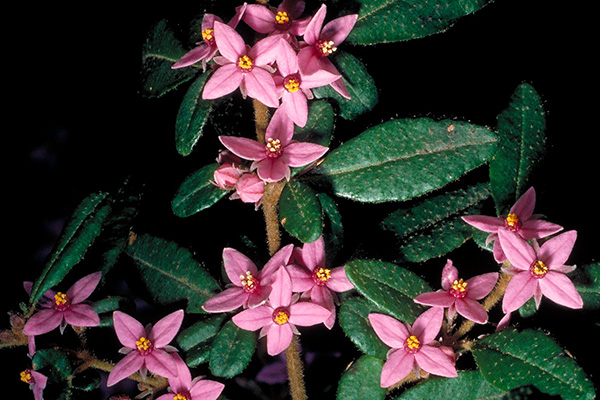
Boronia mollis
Photo: Brian Walters
 Australian Native Plants Society (Australia)
Australian Native Plants Society (Australia)